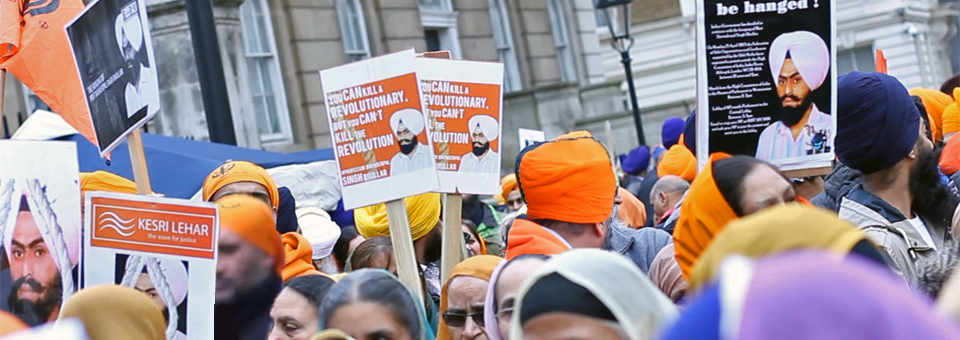In the month of March the World-over celebrated Women’s Day. There have been many great women who have strived against all odds to prevail in this male-dominated world. Recently, the Nobel prize has gone to three African women for contributing to helping their own people to stand up against tyranny and lead peaceful protests during the Arab spring. In our part of the World, in Myanmar, a dynamic woman Aung San Sui Kyi has finally prevailed after a long ordeal against military rulers and has set an example for the whole human race. But despite these achievements there are still many problems faced by women. A recently released survey revealed that 1.2 million girls in the age group of 12 to 14 years of age are pushed into sex trafficking worldwide. And it appear this kind of abuse is still far too common.
In a recent gathering held in Delhi, of learned woman from all walks of life, the main topic was the plight of woman in Indian jails. Whether it is the developing or the developed World, jails represent the underbelly of the prevailing system in that state and depict the deprivation and segmentation of that society. In this women’s gathering many eminent social workers shared their views and personal experiences. It is a fact that 99.9 percent of women prisoners in Indian jails belong to the deprived lower castes, from within the Adivasis (tribes) and from minority communities. I, having been in jail myself for a long period of time can say with certainty that as one enters the walls of confinement, whether guilty or not, a fear of psychosis is created around that person to cause mental pressure and the perception is encouraged that they are indeed a criminal. People should not visualise women’s prisons in India through the publicised fate of the female State Minister from Punjab who has depicted jail as a hostel or a personal dera. None or almost none receive considerations as the minister has.
In Delhi at the women’s gathering, a story of one woman prisoner was shared. She was inside for a minor offense, but was severely hit on the lower abdomen by the guards after a brief infringement. The blow made her bleed for a whole month without attention before she succumbed to the injury. Nobody was blamed.
Another story discussed was of a Jaipur woman in a local police lock-up. Three policemen picked her up for a minor offense, stripped her, sexually assaulted her and then badly beat her. She belonged to a deprived class of society. Her humiliation led her to attempt suicide by jumping before a running train. She failed to succeed resulting in injuries that have left her paraplegic. The curse of custodial violence, even though banned and outlawed in this ‘land of Gandhi’ has become routine. This may be the only state where the law doesn’t give any credence to a uniformed persons testimony in court, but for the testimony of a common man to prevail depends on his social status. This is the law that is supposed to be of the same meaning for all.
A scientist by profession shared concerns based on her own brief experiences in confinement in an Indian jail. She narrated how this was her worst nightmare and she suffered the lowest form of humiliation as soon as she set foot inside the jail. Women prisoners in some jails do not even have access to sanitary napkins and she had to use moth-eaten blankets as pads. Though there is a Higher Court law barring the arrest of women between sunset and sunrise in India, regions undergoing troubles are protected by special laws so it means nothing. In certain areas of India, many low caste tribes people, both women and men are routinely picked up should any crime be reported in the area.
A lady named Anu, a known trade unionist, shared her thoughts with the gathering. Class divides run deep in jails and violence and abuse are widely prevalent inside. Rampant corruption has meant that jails meant for 250 women are loaded with double that number. Many of the women in prison still don’t know why they are there after many years of incarceration. The regions where there is uprising or agitations are ongoing, have gone through custodial abuse of women folk, like todat in the tribal areas of central India where people are fighting for their due rights; tribal women are picked up regularly by security forces and stuffed in small areas with no suitable or dignified place for washrooms or to change.
The same happenings were witnessed in Punjab too. Not so long ago, mostly Sikh women, suspected to be related to Sikh rebels were badly abused and sexually exploited. Some just vanished without trace. To lower the dignity and pride of any section of society, the State always targets helpless women, no matter how civilised a nation has become. The recent loud outburst of Bhai Rajoana’s issue is the direct result of this long suppressed pain of the Sikhs and shows that despite a loss of the pride or dignity of a people, injustice cannot go unchallenged.
In much the same way, in other regions of India such as Kashmir, the North-Eastern states, and a vast part of central India where uprisings are occurring, women are at the receiving end of the security forces. But once in a while will you hear about these suppressed voices; recourse to any type of redress is non existent.
It is both heartening and sad that Supreme Court judgements say a lot of good things in English about dignity and rights, but the reality of local police stations is far removed from it all. What India is undergoing in it’s underbellies is unacceptable for any civilised society or state and it exposes layers in the justice system which work differently for different sets of people. As a famous English writer Samuel Johnson put it best: “Where a great proportion of the people are suffered to languish in helpless misery, that country must be ill policed, and wretchedly governed: a decent provision for the poor is the true test of civilisation.”





